Today we’re going to be looking at if fearful avoidants even miss their exes.
But I think really the better question isn’t if a fearful avoidant will miss their ex but rather when they will miss their ex.
I’ve decided the best way to lay this article out is by actually following the breakup process that a fearful avoidant will go through so you can understand the world a bit better from their point of view.
Ultimately there are six phases that a fearful avoidant will go through after a breakup and yes, missing you will happen, but again, it’s a matter of when and not if.
- Understanding The Difference Between A Fearful Avoidant And A Dismissive Avoidant
- The Avoidant Self Fulfilling Prophecy
- Becoming Their Phantom Ex
- Nostalgic Reverie Based On The Phantom Ex
- Reaching Out To You To Recapture The Past
- The Turtle Effect
Let’s get started.

What Are Your Chances of Getting Your Ex Boyfriend Back?
Take the quizPhase #1: Understanding The Difference Between A Fearful Avoidant And A Dismissive Avoidant
In order to describe the differences between a fearful avoidant ex and a dismissive avoidant ex we first need a greater understanding of attachment theory as a whole.
So really there are only two “categories” of attachment styles.
- Secure
- Insecure
The secure attachment is essentially the holy grail that you’re always hoping to shoot for. Of course, most of the people visiting this website still have work to do on that front, including myself.
Yep, yours truly took a test and found out he was a dismissive avoidant 🙁 .
Which leads us to the insecure type of attachments of which there are two.
- Anxious
- Avoidant
So, how would you define each of these insecure attachments?
Well, Coach Tyler and I did a pretty awesome interview where we did that in depth,
Anxious Attachment Style: This person typically requires a lot of attention and affection. They really like to feel close to their partners, it’s not uncommon for them to want to spend every single day with them. The core wound of them is that they have a fear of abandonment and being alone and so that’s what usually triggers their anxious behaviors in relationships.
The Avoidant Attachment Style: They are a person that does not like a lot of emotional intimacy or vulnerability within a relationship. They typically revert a conversation back to someone else to talk about themselves to avoid the spotlight. Often that’s how you’ll figure out if they’re avoidant or not. Ultimately they are afraid of having a deeper emotional connection and it all can stem from their experience in childhood. They’ve learned that any time they are vulnerable, it can be used against them and therefore they don’t rely on other people.
Of course, as we continue this inception, dream within a dream idea, there are actually two types of avoidant attachment styles.
- Dismissive Avoidant
- Fearful Avoidant
The best way to think of them is like this,
- Dismissive Avoidant (straight up avoidant characteristics)
- Fearful Avoidant (both avoidant and anxious characteristics)
Obviously we are looking at fearful avoidants today and one really fascinating thing about them is that their partner will often dictate which “side” of them comes out in a relationship.
So, if you classify as having an anxious attachment style and you get partnered up with a fearful avoidant then their avoidant tendencies are likely to dominate. That doesn’t mean they still won’t have anxious moments but mostly they’ll be dominated by avoidant characteristics.
On the other hand, if you are avoidant then their anxious characteristics will likely come out in their relationship as they seek more validation from you.
This is often why many of our clients are confused with their exes hot and cold behavior. They view the world in a linear way. When you love someone you love someone but the fearful avoidant will love someone one day, want to run the next and then jump back into being “all in.” These extreme mood swings are characteristic for the fearful avoidant and that’s important to understand as we go through their phases of the breakup.

What Are Your Chances of Getting Your Ex Boyfriend Back?
Take the quizPhase #2: The Fearful Avoidant Self Fulfilling Prophecy
One of the things that I’ve noticed over the years I’ve been coaching on Ex Boyfriend Recovery is the fact that almost every identifying avoidant has the same victim mentality in relationships.
Sometimes they are the victim but most of the time they aren’t. In fact, most find themselves caught on a hamster wheel going around and around in the same self fulfilling prophecy.
It’s a mistake to assume that just because your ex is an avoidant they don’t really want to fall in love and have that happily ever after. They do, in fact that means a lot to them. The problem is that their attachment style prevents them from achieving it.
Above I mentioned a pretty interesting take on how a fearful avoidant will have a dominant anxious or avoidant side and their partners attachment style is what tends to bring that out.
One of the bits of information we are pretty sure about is that most of the people reading this website exhibit more anxious behaviors than avoidant behaviors which means that if they are partnered with a fearful avoidant that fearful avoidant is more likely to exhibit dismissive avoidant tendencies throughout the relationship.
And that wheel graphic I put above is pretty much the self fulfilling cycle in a nutshell.
- The FA wants someone to love them (anxious side)
- They find you and things are great (anxious/neutral side)
- Hey, I’m noticing some alarming things about my partner (avoidant side being brought on by partners anxious side)
- I’m going to leave this relationship (avoidant side)
- I actually left the relationship (avoidant side)
- I’m so happy I left (avoidant side happy in safe space)
- I’m starting to feel lonely (anxious side)
- Why can’t I ever find the right person? (anxious side)
So, one of the first sentences I wrote in this article argued that it’s a matter of “when” not “if” an ex will miss you.
If you look at that cycle that means we’re looking for this area right here,
When does that happen and what is the psychology behind it?
Well, believe it or not understanding the phantom ex concept is key to having that happen.
Phase #3: Becoming Their Phantom Ex
Avoidants often fall victim to a concept called “the phantom ex.” You’ll know it as “the one that got away.” That one person that if they could have a “do-over” they’d go back in time and never leave.
The psychology behind it is simple.
An avoidants core wound revolves around a loss of independence in a relationship. They value self sufficiency and it stems from their childhood. Their caregivers gave them basic physical necessities but not emotional ones this resulted in them having to learn to self soothe.
But we all lie to ourselves. Very rarely do avoidants like to acknowledge this weakness so most go throughout their lives not diving deep and asking themselves the hard questions. The best analogy I can think of to illustrate this point has to do with Carl Jung and the concept of the shadow.
We all have a shadow side. A repressed version of ourselves that we don’t want to acknowledge. Jung argued you should do shadow work to acknowledge the shadow and integrate it, thereby fully gaining control over it.
Same principle applies here with avoidants. They don’t like to acknowledge their weakness but I’m getting off topic.
A perfect relationship for an avoidant is one in which they can manufacture the feeling of longing but do away with the actual work of creating it. That’s why they fall victim to the one that got away syndrome.
It’s the perfect scenario for them and assuming you give them enough time they may paint you in that phantom ex light.
They’ll place you on that pedestal because it feels good to remind themselves of how they once felt during the highs. In an odd way, it’s their version of self soothing. Usually when they start to do this that’s the first stepping stone for them “missing you.”
Which brings us to phase four.
Phase #4: Nostalgic Reverie Based On The Phantom Ex
One of my more popular YouTube videos dealt with this concept almost entirely,

What Are Your Chances of Getting Your Ex Boyfriend Back?
Take the quizEssentially I argue that because of an avoidants closed off nature they don’t give themselves permission to begin “missing an ex” until after they feel safe. Of course, there are really only two scenarios where they feel safe.
- They’ve moved on to someone else
- They feel you’ve moved on from them
This is why so many of our success stories are reporting that their ex came back when they were least expecting it. It was only after our clients put forth signals that they were “over the breakup” that the phantom ex syndrome kicked in and the fearful avoidant reached out wanting to recapture the past.
Let’s actually move on a bit prematurely to the next phase because really the next one is highly dependent on this one.
Phase #5: Reaching Out To You To Recapture The Past
During this bout of nostalgia this is often where we see fearful avoidants reaching out to their exes in a bid to recapture the past.
So, using our fun hamster wheel that would be these phases of the post breakup experience,
- They begin to feel lonely (their anxious side starts to overtake their avoidant side)
- They start wondering, “why can’t I ever find the right person?” (their anxious side is in full effect here plus a bit of the victim mentality)
- And they end up right back where they started wanting to find “the right person for them)”
It’s during this time period that they start to reach out to you again think you can solve the problem. We also think a bit of the peak end rule occurs here,
Essentially they stop remembering all the things about you that caused their avoidant side to flare up and only start remembering those times where they were truly happy, the peak moments of the relationship which further fans the flames of their nostalgia.
Of course, to the average person it would seem like a bad idea to get back into a relationship with a fearful avoidant, right?
Wouldn’t they just go through the cycle all over again?
Phase #6: The Turtle Effect
I want you to pay attention to something for me for one minute.
Take a look at this graphic again,
Look at the constant tennis match going on between anxious and avoidant tendencies.
This is the fearful avoidant in a nutshell.
They are like turtles poking their heads out of their shells one day and hiding the next and yes, most of the time if you get back into a relationship with one you’re doomed to go through some variation of that cycle above.
So, how do you break the revolution?
Well, that’s where the attachment gravity concept comes into play.
Remember how I said that fearful avoidants anxious and avoidant tendencies are dependent on what types of behaviors their partner is exhibiting?

What Are Your Chances of Getting Your Ex Boyfriend Back?
Take the quizWhat happens if a fearful avoidant gets into a relationship with a secure attachment style?
Well, what we’ve noticed is that over time that secure attachment pulls the fearful one into it and the fearful one begins to learn how to be more secure themselves. This is why so much of my time is dedicated to helping men and women become more secure after a breakup because usually when they enter my orbit they aren’t very secure.
Of course, a paradox often arises.
Secure people usually aren’t attracted to fearful people, they’re attracted to other secure people. So, they have such a high confidence level with themselves that they often have no problem betting on themselves after a breakup.
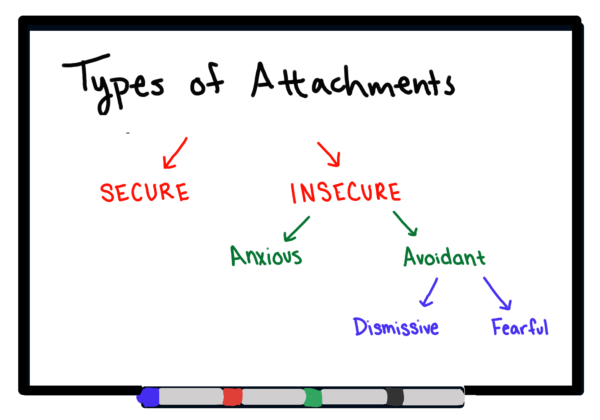

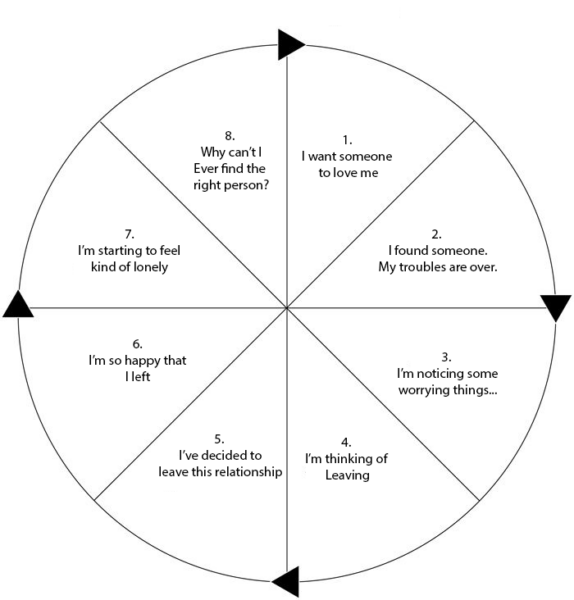
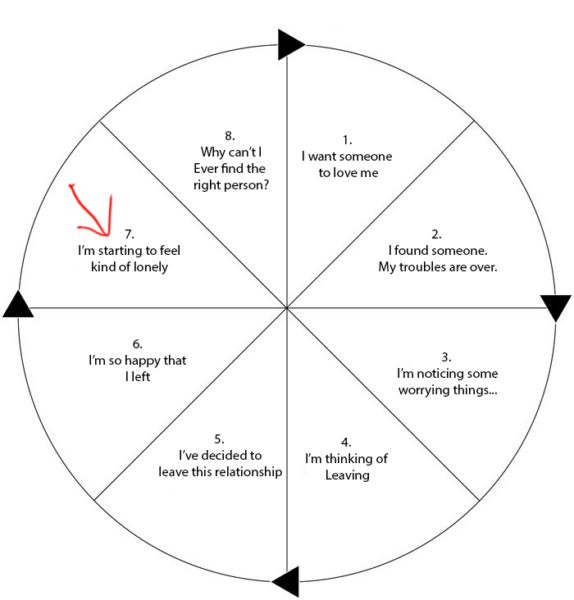
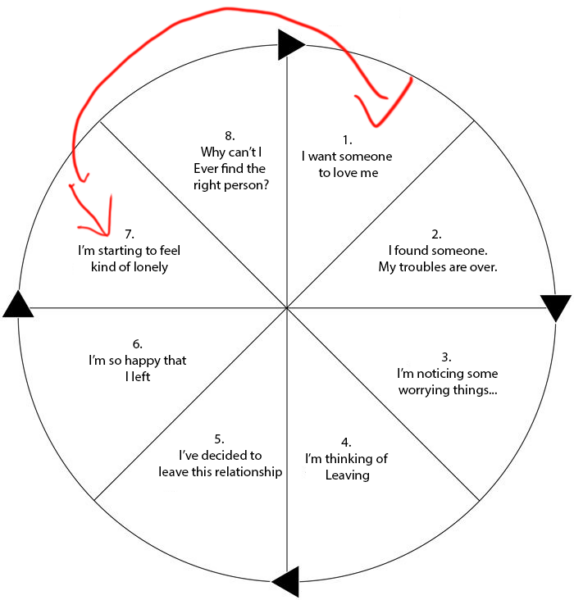
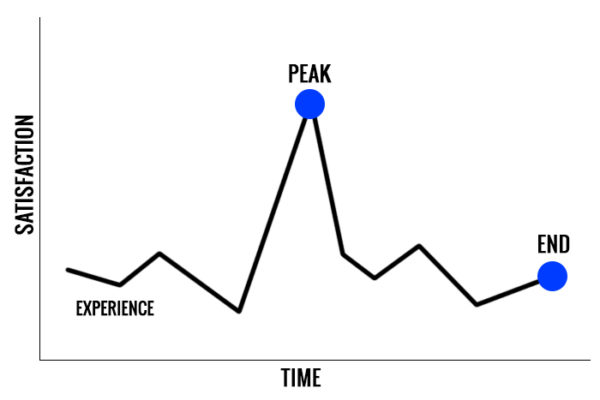

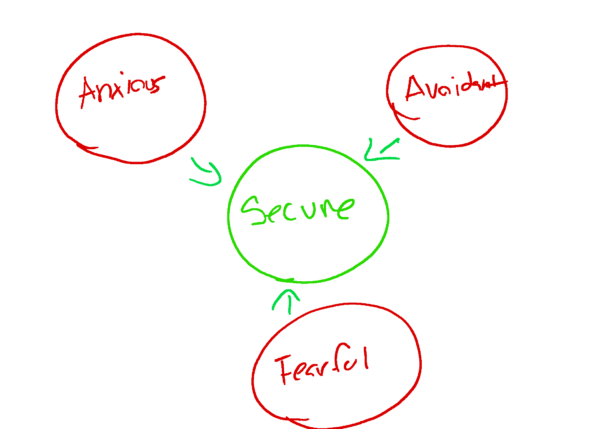
Jessica
October 21, 2024 at 10:12 pm
I am secure but after 4 years my fearful avoidant partner blindsided me with a breakup when he became triggered. I tried to create a healthy space, I encouraged him to be open, I was patient, etc. However, he still ended it and moved onto someone new within 2 weeks. Cold and callous to me and refused to provide any closure. He showed zero empathy, despite telling me I was his everything 3 weeks ago. As much as my body is going through hell, I don’t want someone with these toxic behaviors in my life. I always saw the red flags and tried to encourage him to get help, but he didn’t.
Felicity
May 24, 2022 at 3:35 pm
I am currently trying to re unite with my FA ex, we were apart for two years but very much still in each others lives as friends during that time. Our initial relationship lasted six years when neither of us had a clue about attachment styles, I am very much secure.
Your information has been vital for me navigating my welcoming him back into my life as more than friends, he was initially stunned that I would even contemplate a loving relationship with him again. He is very much fearful of it going wrong again, I am gaining knowledge and remaining secure and patient for him, giving him lots of space and time. He has recently initiated physical affection which is a new development for us! I am so hopeful, as I dearly love and understand him.
I hope I’m not too late!
Thank you.
Al
March 5, 2022 at 10:23 pm
Your articles are so on point. I’m so grateful I came across these. I was so damn confused. The avoidant left me 2 weeks ago. I was seeing this cycle happen. I was questioning myself. It all makes sense now. It’s sad. I really thought she was changing from her past. But the first sign of struggle, she dropped me. It wasn’t even real stuff. But it was real to her. It’s very sad. I cared about her a lot. Part of me wishes she heals and comes back, or comes back after seeing her part. But as you said… I’ll be moved on already.
Jérôme
February 21, 2022 at 10:26 am
Hy ! Very interesting post ! One question concerning the no contact rule with an avoidant. How long (months for example) should we wait before having a contact with an avoidant ? Is there a weak signal which can be considered as a green flag to text an avoidant ?
Best regards
EBR Team Member: Shaunna
February 21, 2022 at 10:39 am
Hey Jerome, no weak signal is not a green flag to send a text… Your NC needs to be 45 days minimum, but I would suggest you do not pass the 66 day mark